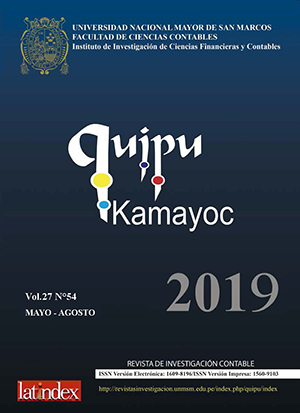The selective taxation of consumption in Peru: Between the recovery purpose and the extrafiscality
DOI:
https://doi.org/10.15381/quipu.v27i54.16190Keywords:
Tax, selective, extrafiscalidad, collection, consumptionAbstract
Objective: The purpose of the investigation is to determine whether the fundamentals of selective taxation, its structure, purpose and theoretical importance are corroborated in practice. To do this, it is questioned whether the modification mentioned was for collection purposes or if it was, rather, a discouraging measure of consumption. Method: It is a qualitative investigation since the phenomenon is explored and described from the perspective of the researcher and is based on the review of literature, in context and in intuition. Results: In May 2018, the Ministry of Economy and Finance issued several supreme decrees increasing the rates of the Selective Consumption Taxes in Perú. The products affected by the increase were fuels, sugary drinks, alcoholic beverages, and new and used vehicles. The disposition far from going unnoticed became controversial and media, revealing the misinformation that exists on this tribute. Conclusions: In practice, the selective taxation it shows distorted in terms of the theoretical fundaments that support it, that is to say, the tax is not accomplish its extra-fiscal purpose (demotivating the consumption of the goods affected by the burden) but instead, almost by inertia and supported by the economic characteristics of the goods that are subject to the burden, the fiscal purpose is to overcoming the traditional extrafiscality that must follow the selective taxation.
Downloads
Downloads
Published
Issue
Section
License
Copyright (c) 2019 Raúl Enrique Ríos Culquicondor

This work is licensed under a Creative Commons Attribution-NonCommercial-ShareAlike 4.0 International License.
AUTHORS RETAIN THEIR RIGHTS:
a. Authors retain their trade mark rights and patent, and also on any process or procedure described in the article.
b. Authors retain their right to share, copy, distribute, perform and publicly communicate their article (eg, to place their article in an institutional repository or publish it in a book), with an acknowledgment of its initial publication in Quipukamayoc .
c. Authors retain theirs right to make a subsequent publication of their work, to use the article or any part thereof (eg a compilation of his papers, lecture notes, thesis, or a book), always indicating the source of publication (the originator of the work, journal, volume, number and date).






